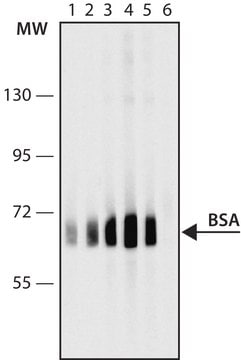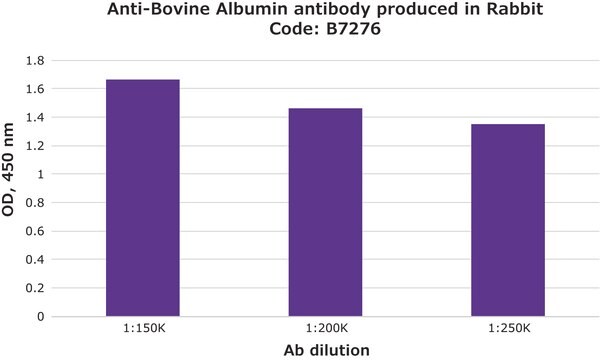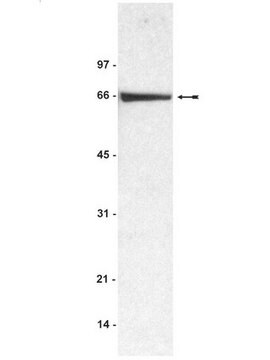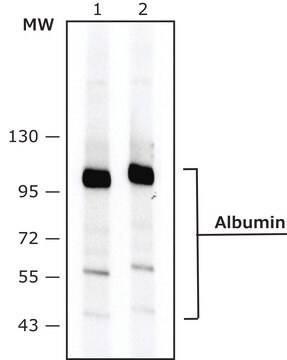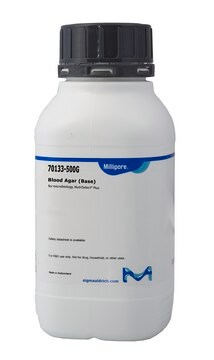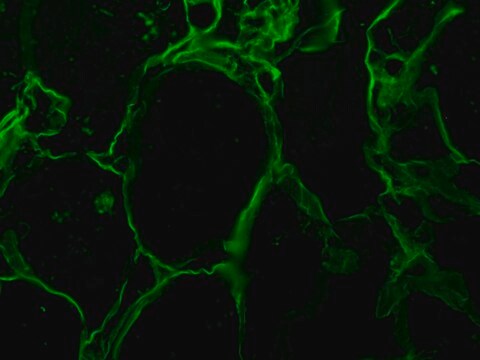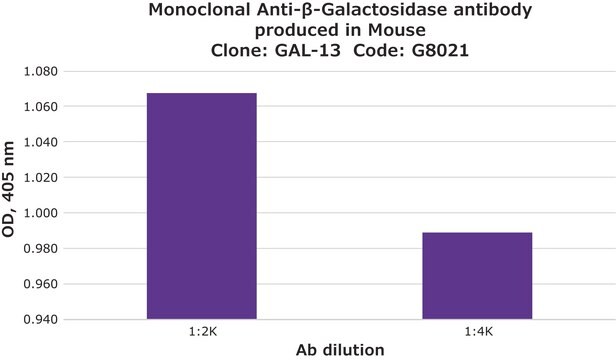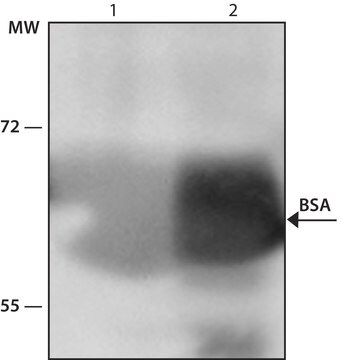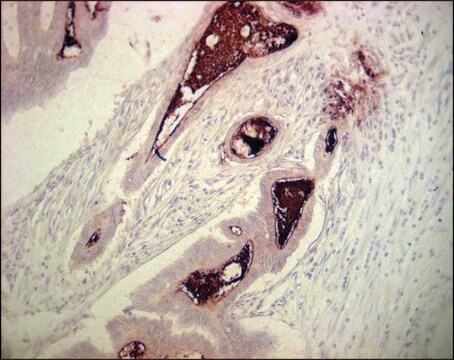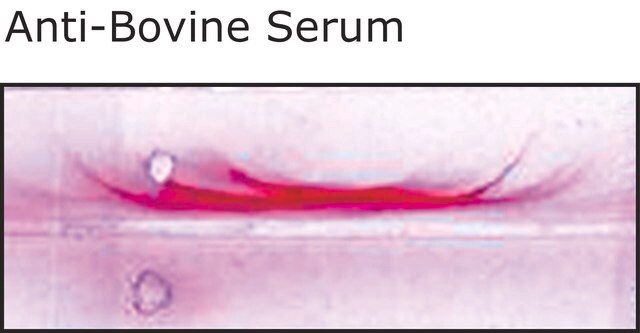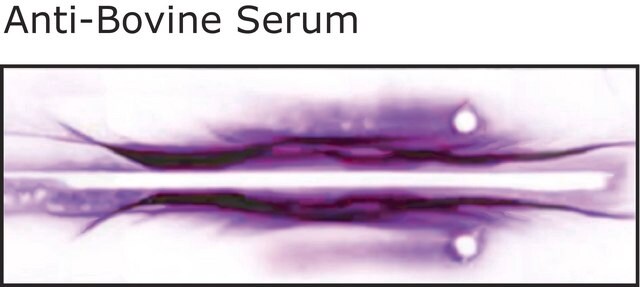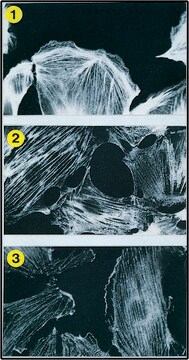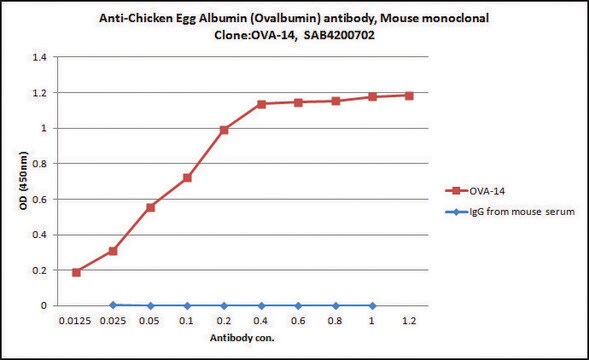B2901
Monoclonal Anti-Bovine Serum Albumin antibody produced in mouse
clone BSA-33, ascites fluid
Synonyme(s) :
Anti Bsa, Anti-Bsa Antibody, BSA Antibody - Monoclonal Anti-Bovine Serum Albumin antibody produced in mouse, Bsa Antibody, Anti-Albumin, bovine serum, Anti-BSA
About This Item
Produits recommandés
Source biologique
mouse
Conjugué
unconjugated
Forme d'anticorps
ascites fluid
Type de produit anticorps
primary antibodies
Clone
BSA-33, monoclonal
Contient
15 mM sodium azide
Espèces réactives
bovine (high), turkey (low), canine (low), sheep (high), horse (low), goat (high)
Ne doit pas réagir avec
human, hamster, rabbit, donkey, guinea pig, mouse, rat, chicken, feline, pigeon, pig
Technique(s)
dot blot: suitable
indirect ELISA: 1:1,000
Isotype
IgG2a
Conditions d'expédition
dry ice
Température de stockage
−20°C
Modification post-traductionnelle de la cible
unmodified
Informations sur le gène
bovine ... Alb(280717)
chicken ... Alb(396197)
dog ... Alb(403550)
horse ... Alb(100034206)
human ... ALB(213)
mouse ... Alb(11657)
pig ... Alb(396960)
rabbit ... Alb(100009195)
rat ... Alb(24186)
sheep ... Alb(443393)
Description générale
Spécificité
Monoclonal Anti-Bovine Serum Albumin antibody is specific for SDS-denatured and reduced BSA. While the product is highly cross reactive with goat and sheep serum; it has a lower affinity for dog, turkey and horse serum albumins.
Immunogène
Application
- enzyme linked immunosorbent assays (ELISA)
- competitive ELISA
- immunodot blot
- western blotting
- immunoaffinity purification or adsorption of BSA from biological fluids.
Actions biochimiques/physiologiques
Clause de non-responsabilité
Vous ne trouvez pas le bon produit ?
Essayez notre Outil de sélection de produits.
Code de la classe de stockage
12 - Non Combustible Liquids
Classe de danger pour l'eau (WGK)
nwg
Point d'éclair (°F)
Not applicable
Point d'éclair (°C)
Not applicable
Certificats d'analyse (COA)
Recherchez un Certificats d'analyse (COA) en saisissant le numéro de lot du produit. Les numéros de lot figurent sur l'étiquette du produit après les mots "Lot" ou "Batch".
Déjà en possession de ce produit ?
Retrouvez la documentation relative aux produits que vous avez récemment achetés dans la Bibliothèque de documents.
Les clients ont également consulté
Notre équipe de scientifiques dispose d'une expérience dans tous les secteurs de la recherche, notamment en sciences de la vie, science des matériaux, synthèse chimique, chromatographie, analyse et dans de nombreux autres domaines..
Contacter notre Service technique